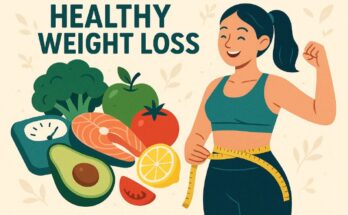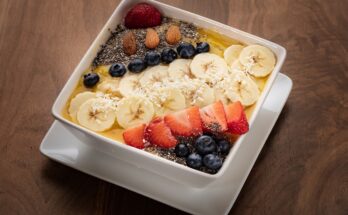Calorie Count (Per Serving)
Low calorie meals When considering weight loss, tracking the calorie count in your meals is necessary. Low calorie meal options are designed to allow you to eat healthy meals that fit in your daily calorie limit without feeling deprived.
Low calorie meals will typically fall in the range of 200-400 calories per meal, making it easier to lose weight or create a calorie deficit – the most important part of weight loss. Low calorie meals typically include lean proteins, vegetables and/or whole grain that provide nutrition without excess calories.
For instance, your salads with grilled chicken and light vinaigrette will typically be about 350 calories, and a vegetable stir fry with tofu might be closer to 300 calories. By choosing low calorie meals periodically, you can manage your calories better and help you lose weight.
When you are looking at calorie counts, always check the portion size. A low calorie meal can become a high calorie meal if it is doubled.

Macronutrient Balance
The balance of macronutrients in your meals is incredibly important when trying to effectively lose weight. Low calorie meals are more than just portion size. They tend to also offer the right mix of proteins, carbs, and healthy fats to provide energy while helping you reach your goal.
Protein is also to be given special attention. Protein is important for preserving muscle mass and keeping you satisfied for a longer period of time. When you see low calorie meals, often you’ll see some source of lean protein like chicken breast, tofu, or legumes included to help increase satiation without increasing the calorie content much.
Carbs are an important source of energy, however not all carbs are equal! It’s better to have complex carbs such as brown rice, quinoa, and vegetables because they digest slower, provide more sustained energy, and will help keep your blood sugars more stable which may reduce cravings later.
Healthy fats from foods like avocados, and nuts, and healthy oils are also important to include in low calorie eating plans. Healthy fats help with brain function, balance hormones, and duration of satiety.
The best low calorie meals provide the right balance of protein, carbs, and fats. This will not only help you lose weight, but it will also help you increase your health, energy, and maintain a well balanced and sustainable eating plan.

Satiety (Fullness Level)
Feeling hungry while dieting is one of the greatest challenges in weight loss. Many dieters believe that low-calorie meals leave them feeling hungry. While that is true in many cases, it is not true in all. If a low-calorie meal is made well, it can actually keep you feeling satisfied for hours.
The secret to satisfying a meal lies in the ingredients. When menu components are rich in fiber, protein, and volume (think veggies or broth-based meals), we can experience satiety for a longer duration. For example, a low-calorie meal of grilled chicken, quinoa, and roasted veggies is far more satisfying than a salad with very few toppings.
Lastly, meals that include a variety of textures (like crunchy raw veggies, and creamy avocado or hummus) may also change the satisfaction level in your brain.
If you are trying to lose weight and you are eating low-calorie meals with plenty of protein and fiber, it’s likely that you will notice a decrease in snacking and overeating later in the day. You will be able to stay in a calorie deficit and you won’t constantly feel hungry–the perfect recipe for weight loss success in the long term.
Taste & Flavor Profile
One of the largest misconceptions about low calorie meals is that they are tasteless or boring. The truth is, there are many low calorie meals that are super delicious if they are made with the right ingredients and flavor enhancers. You can do an impressive amount of work with herbs, spices, garlic, citrus or any low-calorie sauce and enhance flavor without adding a single calorie.
When considering low calorie meals, taste is often the reason someone doesn’t stick with their weight loss goal or plan. Meals that are loaded with umami ingredients such as mushrooms, tomatoes or lean proteins tend to be more filling. Meals relying on alone for flavor plain vegetables, boiled vegetables or ingredients are too bland and not appetizing.
For instance, a grilled chicken salad with a lemon vinaigrette flavor is refreshing and zesty, whereas a low calorie stir fry with ginger and garlic flavor is savory with satisfying spice. In both examples, it’s more about using hearty and natural flavors to increase flavor without adding items such as cream, cheese or butter—those are heavy, void of flavor items.
In conclusion, low calorie meals don’t have to lack flavor. You can have a dish that is every bit as enjoyable, and far more sustainable, with combinations of flavors and textures that are low in calories.
Preparation Time & Ease
When looking for low calorie meals for weight loss, the amount of preparation time can be relevant. There is not always enough time to prepare elaborate meals every day, and who wants to waste energy? You want to make simple things that are both healthy and easy!
Many of the low calorie meals take under 30 minutes to prepare, and use common items and simple tools. Grilled chicken with steamed vegetables, tuna salad wraps, or simple tortilla wraps with veggies are all examples of meals that are quick to make and require little prep. These meals are great for busy bodies trying to stick to their weight loss goals and don’t want to spend hours in the kitchen.
Meal prep is another way to assist in saving time. Cooking low calorie meals in bulk when you have extra time means that you always have items ready for you to eat when hunger strikes. This will also help with time management and be sure you don’t give in to temptation for convenience foods that you have on hand.
So, low calorie meals do not have to be difficult. You can make quick, easy, and nutritious meals that help you stick to your weight loss goals by making a couple of smart choices.

Cost Per Serving
When selecting meals for weight loss, cost is also a crucial factor for thoughtful meal planning—especially when planning for an entire week and/or family feeding. The good news is that eating healthy doesn’t have to cost a lot of money!
You can get a lot of low calorie meals from very simple and inexpensive ingredients such as vegetables, whole grains, eggs, legumes, and lean proteins. For example, homemade vegetable stir-fry with brown rice can cost you less than $2 per serving, and is still filling and nutrient-rich.
On the other hand, some packaged or branded, low calorie snack solutions can easily cost you anywhere from $5 to $10 per single portion! While these foods may be convenient, they are not always cost-effective for long term use.
If you are on a budget, and want to still lose some weight, emphasize meal planning with whole foods. Buying bulk, eating seasonal, and cooking can help to lower the cost per serving on low-calorie foods while giving you total control of the nutrient quality of those calories.
With some budgeting, and planning, the low calorie meals that are effective and satisfying for your weight loss journey, can be affordable too!
Availability of Ingredients
The availability of ingredients is one of the greatest components that you should think about when finding low-calorie meals. For example, a meal might look perfect on paper – low calories, nutritionally balanced, and delicious – but if it includes ingredients that are widely unavailable, it is not going to be important in daily meal prep.
Many low-calorie meals use simple, whole foods like vegetables, low-fat proteins, whole grains, and legumes. These products are usually found at your local grocery store or farmers market and can be relatively inexpensive. In some cases, a recipe may call for specialty food products that may not be widely available, like quinoa or almond flour, tofu, or low-calorie sauces.
If you plan on creating a sustainable weight loss program, I would highly suggest choosing low calorie meals that use fairly common, inexpensive ingredients. You might not have to search for these items every week, and it allows your meal plan to be consistent without having to add too much hassle picking up rare items or spending too much money.
It is always a good idea to take a look at the ingredient list prior to settling on a recipe. If you can find a lot of the products in your house or local store, that meal is much more likely to become a part of your regular rotation.

Meal Type & Variety
One of the greatest obstacles to following a weight loss program is food boredom. When we eat the same thing day in and day our cravings can lead to unhealthy choices, which is why variety, variety, variety is so important when selecting low calorie meals.
Low calorie meals come in all shapes and forms: breakfast bowls, chock-full-of-goodness soups, protein-packed lunch, light weight dinners, and guilt-free snacks. The goal is to balance all types of meals so that you’re eating low calorie meals, while also enjoying all the food that you eat.
For breakfast, Greek yogurt with fruit or oatmeal with chia seeds gives you energy without the excess calories. At lunch, salads with protein or wraps full of veggies keeps you full but light. You may eat grilled chicken with roasted veggies, or stir-fried tofu with brown rice for dinner. Even a snack such as air-popped popcorn or hummus with cucumber slices can be a great snack for your weight-loss journey.
Eating a variety of low calorie meals throughout your day ensures you never get bored with your diet, allows you to stay consistent with weight loss, and keeps you from reaching for unhealthy, high calorie alternatives.

Conclusion
Being in a caloric deficit to lose weight does not have to mean sacrificing taste, satiety, or variety. By making low calorie meal choices, you can have eating delicious food and still get to your weight loss goals. Whether you’re looking for fast breakfasts, hearty dinners, or healthy snacks, there is no shortage of low calorie meals available that work with your eating pattern and provided long term goals.
Be sure to consider calorie goals, nutrient density, cooking time, but also keep satiety and fullness firmly in your mind when making your meal choices. The best eating pattern is the one that is realistic and sustainable, along with enjoyable, and there is clearly a role for low calorie foods in this combination.
Get to experimenting with different meals and do not hesitate to get creative. The more variety you have, the easier it will be to make weight loss easier by staying consistent and motivated.





